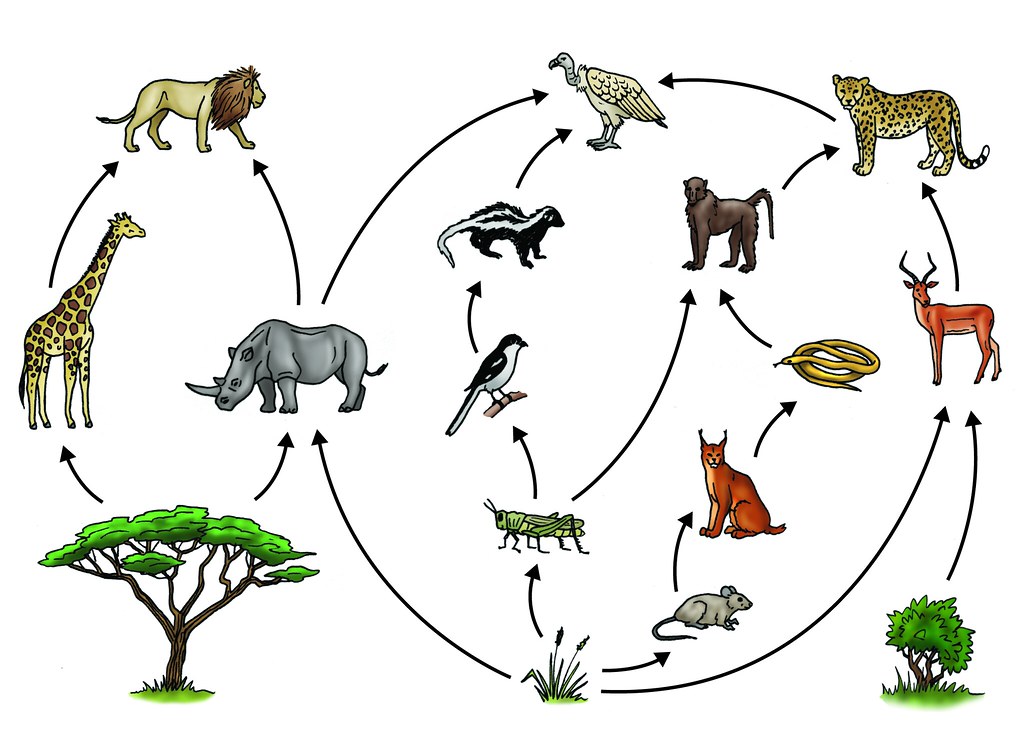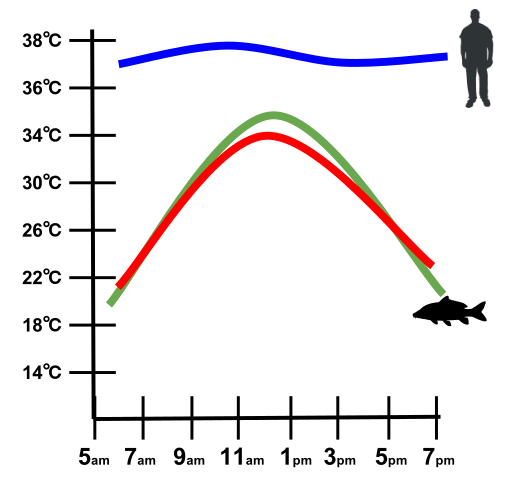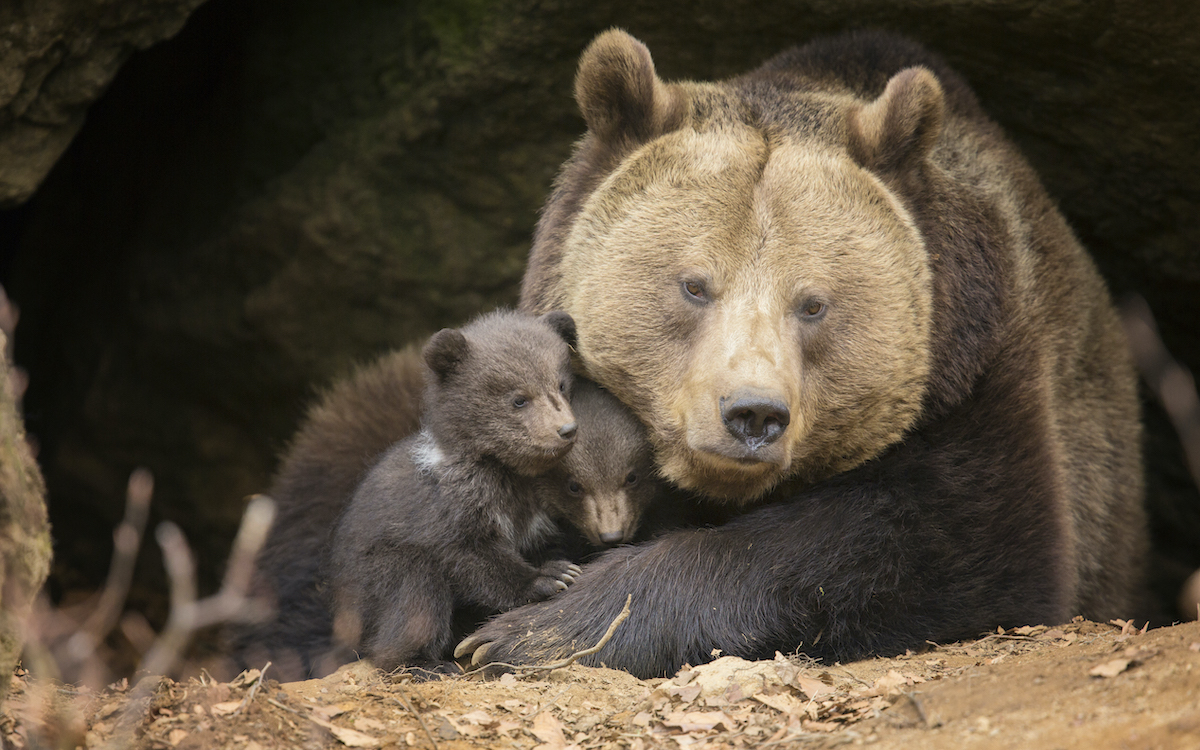Jed Quiaoit
Caroline Koffke
AP Biology 🧬
358 resourcesSee Units
All organisms in an ecosystem need energy. Remember, all the energy that we have on Earth originates from the sun. Photosynthetic bacteria convert this energy into usable energy through photosynthesis.
Energy flows through ecosystems, starting with energy from the sun and traveling through photosynthetic organisms and the organisms that consume them. The majority of energy is lost in the form of heat between levels of the ecosystem. This is because energy is used by the individual in order to produce heat, digest, and go through basic daily functioning.
Trophic Levels
As energy flows through an ecosystem it travels through trophic levels. A trophic level is the energy level in which an organism exists based on what it eats. Autotrophs produce their own energy (think: plants and photosynthetic bacteria). Heterotrophs get their energy from other organisms (think: everyone else). 🌱

Image courtesy of Static Flickr.
The maintenance of energy levels is essential to the survival of all organisms. If an organism is using more energy than it is consuming, creating a net loss of energy, the organism will lose mass and may eventually die.
An organism that gains more energy than it uses has a net positive in energy and will be able to grow and store energy. The increase in energy is essential to an organism surviving and reproducing.
Maintaining Energy
Along with storing energy, organisms also have different strategies for maintaining heat and energy within their bodies. ⚡
Endotherms maintain an even temperature in their bodies. We are examples of endotherms, as we maintain a body temperature between 97 and 99°F. These organisms use a great deal of the energy that they get from food sources in order to maintain their internal temperature.
Ectotherms do not maintain an even temperature in their bodies. Snakes and fish are examples of ectotherms. These organisms must change their behaviors in order to maintain an internal temperature. This may involve hibernating in the winter and lying in a sunny spot during the summer. Along with how an organism maintains its energy and heat, the mass of an organism is usually correlated to the amount of energy that that organism metabolizes. Typically, the smaller that an organism is, the higher its metabolic rate. This would mean that a mouse metabolizes things much more quickly than a human.

Image courtesy of WikiMedia Commons.
Lastly, the overall availability of energy in an ecosystem determines the growth, population density, and overall health of the ecosystem. If there are a number of high volume producers in the area, an ecosystem is more capable of survival and reproduction.
Continuing the Energy Conversation
Different organisms use various reproductive strategies in response to energy availability. For example, some organisms, such as many annual plants, reproduce quickly and produce many offspring in one short period of time, in order to maximize the chances of at least some of the offspring surviving to reproduce. Other organisms, such as many trees, reproduce more slowly and invest more energy into fewer offspring, in order to maximize the chances of each offspring surviving to reproduce. This strategy is known as "r-selected" and "K-selected" strategy respectively. 🌲
There is a relationship between metabolic rate per unit body mass and the size of multicellular organisms. Generally, the smaller the organism, the higher the metabolic rate. This is because the ratio of surface area to volume decreases as the size of an organism increases, which means that smaller organisms have to work harder to maintain their body temperature and to obtain food.
A net gain in energy results in energy storage or the growth of an organism. For example, when an organism eats more food than it needs to survive, the excess energy is stored as fat or glycogen. This stored energy can be used later when food is scarce or when the organism needs to reproduce. Additionally, a net gain in energy can also be used for the growth and development of an organism, such as the growth of new cells and tissues.
A net loss of energy results in loss of mass and, ultimately, the death of an organism. For example, when an organism does not eat enough food, its stored energy is used up, and it loses weight. If the energy deficit is prolonged, the organism will die. Additionally, loss of energy can also occur due to energy consumption by cellular respiration and other metabolic processes. An organism that loses too much energy due to prolonged energy deficits, will eventually be unable to maintain its vital functions and will die.

Note: Sierra Club
Note that organisms also use mechanisms to balance their energy intake and expenditure, such as thermoregulation and hibernation to ensure their survival in challenging environment. For example, in cold weather, animals will reduce their metabolic rate to conserve energy, and in hot weather, animals will increase their metabolic rate to dissipate heat. Similarly, organisms also use mechanisms like dormancy or hibernation to survive periods of scarce resources. 🥶
Potential Disruptions to Ecosystems
Changes in energy availability can result in disruptions to an ecosystem. Energy is the driving force of all living systems, and changes in the availability of energy resources can have a significant impact on the functioning of an ecosystem. 😳
A change in energy resources such as sunlight can affect the number and size of the trophic levels. For example, a decrease in sunlight can cause a reduction in the productivity of the primary producers, such as plants, which can then affect the number and size of the herbivores and carnivores that depend on them for food. Similarly, an increase in sunlight can cause an increase in the productivity of primary producers, which can then lead to an increase in the number and size of the herbivores and carnivores that depend on them for food.
A change in the producer level can also affect the number and size of other trophic levels. For example, a reduction in the number of primary producers can reduce the food supply for herbivores, which can then reduce the number and size of the carnivores that depend on them for food. Similarly, an increase in the number of primary producers can increase the food supply for herbivores, which can then lead to an increase in the number and size of the carnivores that depend on them for food.
In addition to affecting trophic levels, changes in energy availability can also affect the biodiversity and distribution of species in an ecosystem. For example, a change in sunlight can cause a shift in the distribution of species, as some species may be better adapted to the new conditions than others. Similarly, a change in the productivity of primary producers can cause a change in the distribution of herbivores and carnivores, as some species may be better able to exploit the new food resources than others!
Check out the AP Bio Unit 8 Replays or watch the 2021 Unit 8 Cram
Browse Study Guides By Unit
🧪Unit 1 – Chemistry of Life
🧬Unit 2 – Cell Structure & Function
🔋Unit 3 – Cellular Energetics
🦠Unit 4 – Cell Communication & Cell Cycle
👪Unit 5 – Heredity
👻Unit 6 – Gene Expression & Regulation
🦍Unit 7 – Natural Selection
🌲Unit 8 – Ecology
📚Study Tools
🧐Exam Skills

Fiveable
Resources
© 2025 Fiveable Inc. All rights reserved.